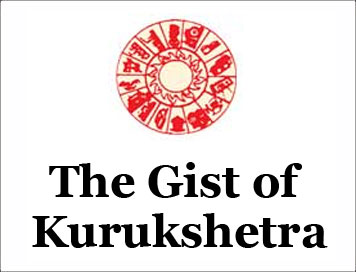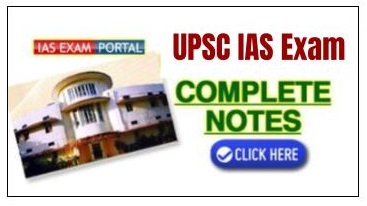(HOT) UPSC Current Affairs 2025 PDF
NEW! The Gist (OCT-2025) | E-BOOKS
(GIST OF KURUKSHETRA) SATELLITE-BASED EARLY WARNING SYSTEMS FOR DROUGHT AND FLOOD MANAGEMENT
(GIST OF KURUKSHETRA) SATELLITE-BASED EARLY WARNING SYSTEMS FOR DROUGHT AND FLOOD MANAGEMENT
(JANUARY-2025)
SATELLITE-BASED EARLY WARNING SYSTEMS FOR DROUGHT AND FLOOD MANAGEMENT
Introduction
Droughts and inundations present major hurdles for rural farming, affecting food availability, economic stability, and infrastructure resilience. Satellite-driven early warning systems act as revolutionary instruments for assessing, predicting, and alleviating these calamities, utilizing cutting-edge technologies for immediate data evaluation and hazard management.
Drought Management through Satellite Technology
Understanding Droughts
-
Definition: A temporary decline in water supply below normal levels, triggered by below-average rainfall, unpredictable distribution, or heightened demand.
Categories:
-
Meteorological Drought: Insufficient precipitation levels.
-
Hydrological Drought: Lowered water levels in rivers and storage.
-
Agricultural Drought: Lack of adequate soil moisture for agronomic development.
-
Socio-economic Drought: Shortages affecting livelihoods and economies.
Impacts of Droughts in India
-
Crop Yields: Water shortages diminish agricultural output.
-
Livelihoods: Farmers encounter financial pressure, leading to relocation.
-
Livestock: Drought jeopardizes animal health and disrupts rural economies.
-
Water Resources: Excessive dependence on groundwater exhausts aquifers.
Satellite Applications in Drought Management
Monitoring and Assessment:
-
Rainfall Anomalies: Satellite observations reveal discrepancies in precipitation.
-
Soil Moisture Mapping: Instruments like SMAP deliver instantaneous data for water resource management.
-
Vegetation Indices: NDVI and EVI evaluate crop stress and the effects of drought.
Early Warning Systems:
-
Seasonal Forecasting: Long-range climate patterns foresee drought threats.
-
Dynamic Monitoring: Frequent updates facilitate prompt actions.
-
Community Alerts: Shared through applications, SMS, and local news outlets.
Mitigation Strategies:
-
Water Resource Management: Satellite mapping directs effective irrigation, rainwater collection, and groundwater restoration.
-
Crop Diversification: Promoting drought-resistant varieties fosters resilience.
-
Government Schemes: Cooperation with programs like PMKSY enhances water conservation and rural development.
Flood Management through Satellite Technology
Understanding Floods
Causes: Excessive precipitation, river overflow, or dam failures.
Impacts:
-
Crop Destruction: Flooded fields lead to total loss of crops.
-
Soil Degradation: Erosion of fertile topsoil diminishes productivity.
-
Infrastructure Damage: Destruction of irrigation systems and roads occurs.
-
Health Hazards: Stagnant water encourages the spread of diseases.
Satellite Applications in Flood Management
Risk Assessment:
-
Rainfall Intensity: Monitoring enables anticipation of potential flooding.
-
River Monitoring: Satellite altimetry observes water levels.
-
Floodplain Mapping: Identifies vulnerable regions for focused measures.
Early Warning Systems:
-
Real-time Alerts: Prompt predictions reduce risk levels.
-
Hydrological Models: Integrate satellite data and ground observations for precision.
-
Community Preparedness: Training promotes effective response initiatives.
Mitigation Strategies:
-
Structural Measures: Data aids construction of levees and reservoirs.
-
Non-structural Measures: Promoting reforestation and sustainable land practices mitigates flood consequences.
-
Relief and Recovery: Satellite mapping speeds up rescue and rehabilitation operations.
Key Satellites and Programs
-
Indian Satellites: INSAT, RISAT, Cartosat: Facilitate climate monitoring, soil evaluation, and disaster management.
-
Global Programs: Sentinel (ESA), Landsat (NASA): Support Indian initiatives with global insights.
-
Collaborative Efforts: Alliances with FAO and WMO for integrated data and enhanced disaster response.
Challenges and Limitations
-
Data Accessibility: Cost barriers limit access for local users.
-
Infrastructure Gaps: Insufficient ground stations in rural regions.
-
Awareness and Training: Poor comprehension of satellite data among stakeholders.
-
Policy Integration: Gaps between satellite initiatives and national disaster management agendas.
Future Directions
-
Technological Advancements: Implementing AI, ML, and IoT for superior data analysis.
-
Collaborative Platforms: Synergy between government, private industry, and academia.
-
Community-centric Approaches: Adapting solutions to rural requirements.
-
Policy Support: Amplifying financial backing and regulatory frameworks.
Conclusion
- Satellite-driven systems provide groundbreaking solutions for mitigating droughts and floods, safeguarding rural livelihoods and fostering sustainable agriculture. In spite of obstacles, utilizing innovations such as AI and global partnerships will bolster disaster readiness and resilience. By merging these technologies with policy initiatives, India can ensure lasting growth for its rural communities.
CLICK HERE TO DOWNLOAD FULL PDF
CLICK HERE TO DOWNLOAD UPSC E-BOOKS
Study Material for UPSC General Studies Pre Cum Mains
Get The Gist 1 Year Subscription Online
Click Here to Download More Free Sample Material
<<Go Back To Main Page
Courtesy: Kurukshetra



